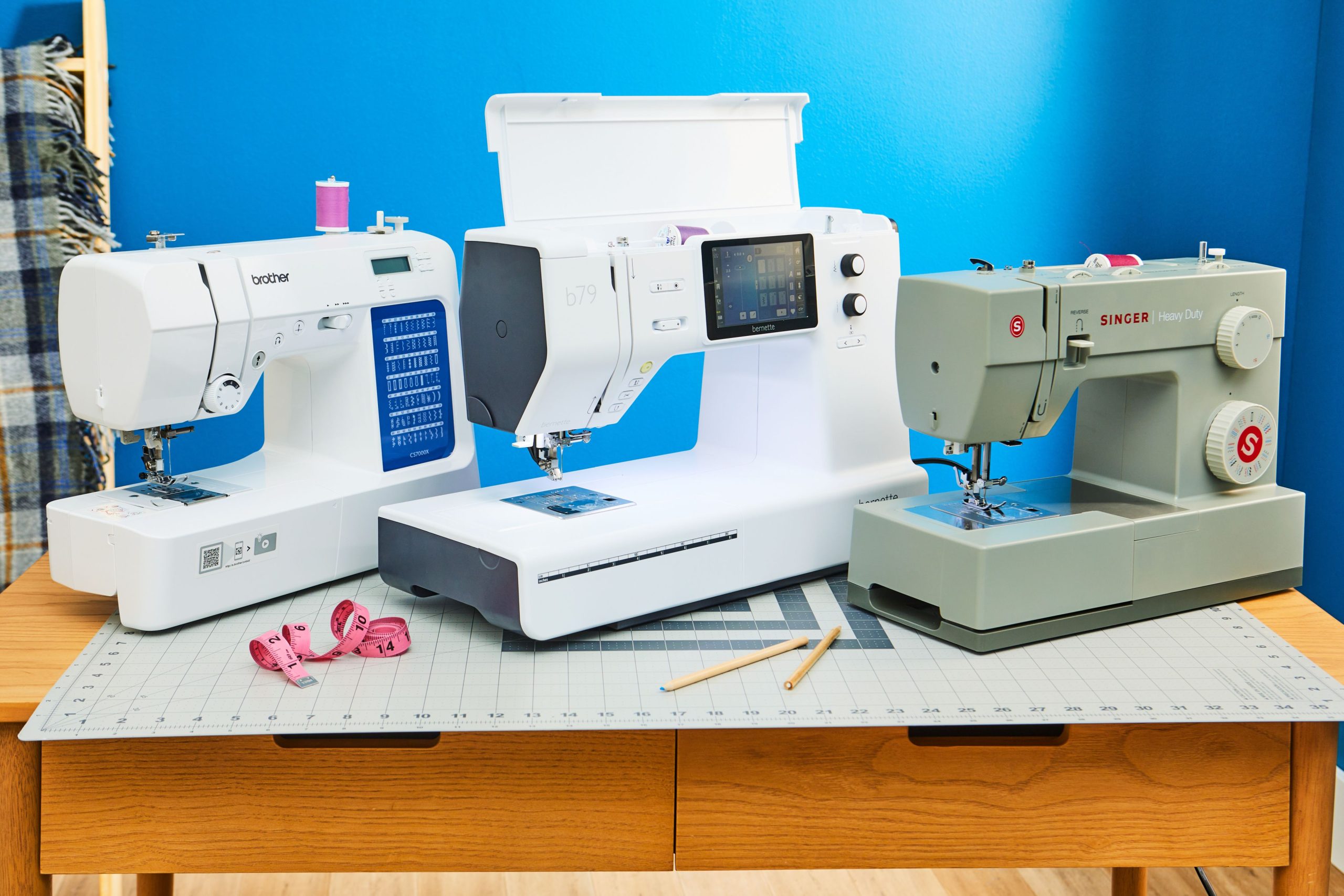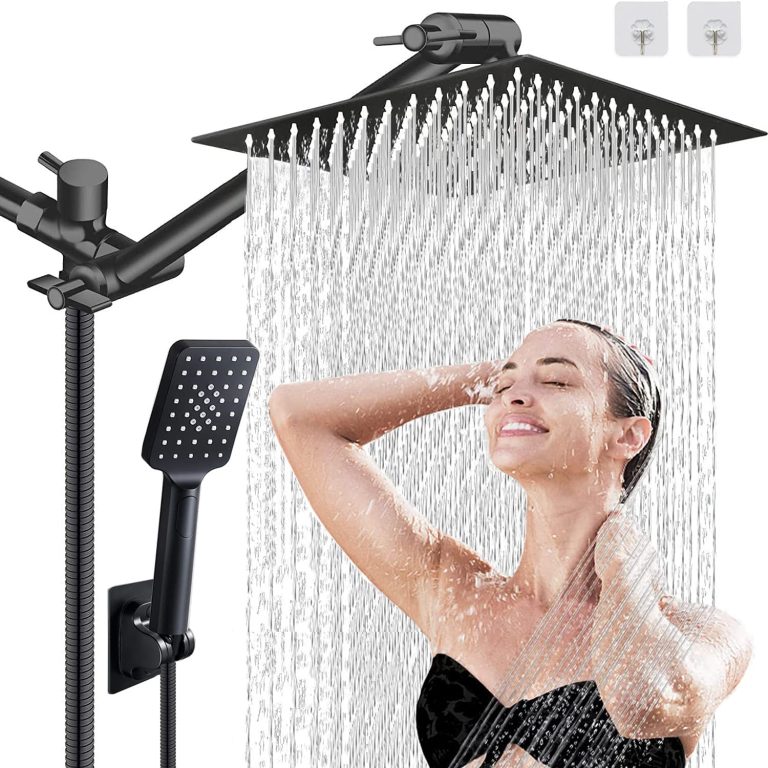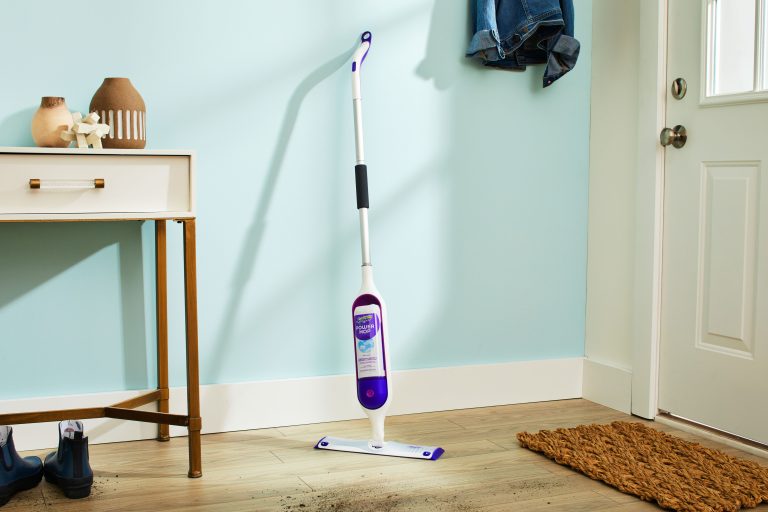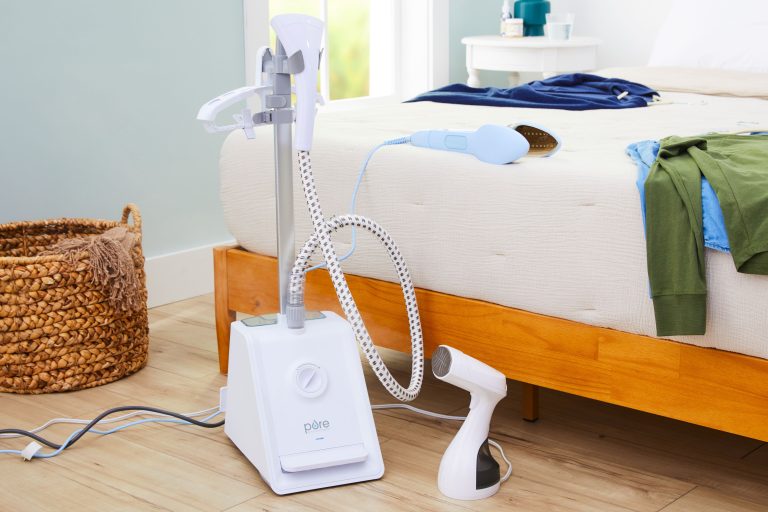9 Best Sewing Machines: Top Picks for All Budgets and Skill Levels
Choosing the right sewing machine can feel like navigating a maze. With countless options available, it’s easy to get overwhelmed. Whether you’re a seasoned seamstress or a beginner eager to start your first project, finding a machine that fits your needs and budget is crucial.
Criteria for Selecting the Best Sewing Machines
Selecting the right sewing machine involves several essential criteria. Here are the key factors to consider:
Durability and Build Quality
Investing in a sturdy machine ensures long-term use. Look for machines with metal frames instead of plastic ones, as they are more robust. Brands like Singer and Brother offer durable models that hold up well over time.
Range of Features and Stitching Options
A versatile machine can handle different projects. Prioritize models with multiple stitch types, such as straight, zigzag, and decorative stitches. Machines like the Janome HD3000 provide a wide array of features, including automatic needle threaders and adjustable speed controls.
User Friendliness for Beginners and Professionals
Ease of use is crucial, whether you’re just starting or have years of experience. Opt for machines with intuitive controls and clear manuals. The Brother CS6000i, for example, offers user-friendly features like an LCD screen and a built-in free arm for sewing cuffs and sleeves.
Best Overall Sewing Machine
When picking the best overall sewing machine, you need something versatile and reliable. The selected model excels in various aspects to meet diverse sewing needs.
Key Features
- Versatility: Handles different fabrics, from delicate silks to heavy denim.
- Stitch Options: Offers 50+ built-in stitches, including decorative and utility stitches.
- User-Friendly: Includes an automatic needle threader and an easy-to-load bobbin system.
- Speed Control: Provides adjustable speeds suitable for both beginners and advanced users.
- Durability: Built with high-quality materials ensuring long-lasting performance.
- Accessories: Comes with essential accessories like multiple presser feet and extra bobbins.
- Pros:
- Ease of Use: Perfect for beginners with straightforward controls.
- Advanced Features: Suitable for advanced users needing complex stitch options.
- Build Quality: Sturdy construction for durability.
- Speed: Adjustable speed control enhances sewing precision.
- Comprehensive Kit: Includes useful accessories right out of the box.
- Cons:
- Price: Higher cost compared to basic models.
- Weight: Heavier, making it less portable.
- Complexity: Advanced features may be overwhelming for absolute beginners.
Choosing the best overall sewing machine ensures you get a versatile, dependable, and feature-rich option suitable for all sewing enthusiasts.
Best Budget Sewing Machine
When you’re on a tight budget, finding a reliable sewing machine can be challenging. Thankfully, there are some excellent options that balance affordability and functionality.
Key Features
Affordable sewing machines often come packed with useful features. Look for these essential ones:
- Built-in Stitches: Machines usually offer 10-20 built-in stitches, including basic, decorative, and buttonhole stitches.
- Automatic Needle Threader: Saves you time and frustration by automatically threading the needle.
- Bobbin System: Top-drop or front-load bobbins for easy setup and monitoring.
- Stitch Length and Width Adjustment: Allows customizing stitches, even on budget models.
- Free Arm: Makes sewing sleeves and pant legs hassle-free.
Pros and Cons
Here’s what you can expect from the best budget sewing machines:
Pros:
- Affordability: Offers a great set of features without breaking the bank.
- Ease of Use: Simple interfaces that are perfect for beginners.
- Portability: Lightweight designs make them easy to transport and store.
- Maintenance: Typically easier to maintain with fewer complex components.
- Limited Features: May have fewer advanced features compared to pricier models.
- Durability: Often made with more plastic parts, which might affect long-term durability.
- Power: Might struggle with thicker fabrics like denim or leather.
- Speed: Usually have lower sewing speed, which might affect productivity.
By focusing on these aspects, you can find a budget sewing machine that meets your needs without compromising on quality.
Best Sewing Machine for Beginners
Choosing the right sewing machine as a beginner can be daunting. We’ve detailed the top features, advantages, and drawbacks to help you make an informed choice.
Key Features
- Automatic Needle Threader: Simplifies the threading process, saving you time and frustration.
- Built-in Stitches: Offers a variety of stitch options like straight, zigzag, and decorative stitches, allowing creative freedom.
- Easy Bobbin System: Ensures quick and smooth bobbin changes, helping avoid thread jams.
- Adjustable Stitch Length and Width: Provides control over stitch customization, making it versatile for different projects.
- Free Arm: Facilitates sewing cylindrical items like sleeves and cuffs, enhancing usability.
- Lightweight Design: Promotes portability and easy storage, perfect for small spaces or frequent transportation.
Pros and Cons
Pros
- User-Friendly: Simple controls and intuitive design make these machines ideal for beginners.
- Affordability: Budget-friendly options ensure you don’t break the bank while starting out.
- Versatile Features: Basic yet versatile features support a wide range of projects from alterations to crafts.
- Portability: Lightweight and compact designs make them easy to carry and store.
- Limited Advanced Features: May lack sophisticated features like embroidery or monogramming.
- Lower Durability: Not as robust as higher-end models, potentially reducing lifespan with heavy use.
- Power: Limited motor power could struggle with thicker fabrics or multiple layers.
- Speed: Slower sewing speed may not be suitable for more experienced users wanting fast project completion.
Best Sewing Machine for Advanced Sewers
Choosing the right sewing machine for advanced sewing projects can significantly elevate your sewing experience. Machines in this category offer a range of advanced features designed to meet the needs of experienced sewers.
Key Features
- Automatic Thread Cutter: Speeds up your workflow by automatically cutting threads after finishing a seam.
- Knee Lifter: Frees up both hands to handle fabric, allowing for greater precision.
- Adjustable Presser Foot Pressure: Enables you to work with various fabric types, from delicate silks to heavy denims.
- High Sewing Speed: Typically around 1,000 stitches per minute, ensuring quick work on large projects.
- Multiple Needle Positions: Offers greater control and precision in stitching patterns and designs.
- Advanced Stitch Options: Provides a broad range of decorative and utility stitches, often including alphabet and embroidery stitch functions.
- Memory Function: Saves custom stitch settings and patterns, allowing repeated use later.
- LCD Touchscreen: Simplifies navigation through settings and stitch options, enhancing user experience.
- Extended Table and Workspace: Offers extra room for handling larger pieces of fabric or quilts.
- Pros:
- Versatility: Adapts to a broad range of sewing tasks, from quilting to garment construction.
- Precision: High accuracy in stitching, essential for complex projects.
- Durability: Built to withstand heavy and prolonged use, often featuring a strong metal frame.
- Speed: Fast sewing speeds help complete large projects more quickly.
- Convenience: Automatic features like thread cutters and needle threaders save time.
- Cons:
- Cost: Higher initial investment due to advanced features.
- Complexity: May have a steeper learning curve, especially for those not familiar with advanced settings.
- Maintenance: May require more frequent professional servicing due to complex components.
- Size and Weight: Often larger and heavier, which may reduce portability.
Advanced sewing machines are powerful tools that can significantly enhance your sewing capabilities, but they come with considerations that should match your sewing aspirations and practical needs.
Best Sewing Machine for Quilting
Choosing the best sewing machine for quilting requires attention to detail and specific features that optimize your quilting projects. Make sure to consider machines built for precision, durability, and ease of use.
Key Features
- Extended Workspace
Look for a machine with a large workspace. This helps maneuver bulky quilts, making quilting more manageable. - High Sewing Speed
Choose a machine with adjustable speed settings. High speeds reduce the time spent on long quilting projects. - Quilting Stitches
Ensure the machine offers a variety of quilting stitches. Options include stippling and blanket stitches. - Automatic Thread Cutter
An automatic thread cutter saves time and enhances convenience. It enables quick transitions between quilting segments. - Knee Lifter
A knee lifter allows hands-free presser foot lifting. This feature is crucial for managing fabric layers during quilting. - Adjustable Presser Foot Pressure
Look for adjustable presser foot pressure. It helps accommodate different fabric thicknesses. - Free Motion Quilting Foot
A free motion quilting foot enables intricate designs. This enhances your creativity and quilt customization. - Stitch Regulator
A stitch regulator ensures consistent stitch length. This keeps your quilting neat and professional.
Pros and Cons
Pros
- Precision
High-end quilting machines provide precise stitching, ensuring professional-quality results. - Ease of Use
Features like automatic thread cutters and knee lifters streamline the quilting process. They save time and reduce manual effort. - Versatility
Adjustable speed settings and a variety of quilting stitches offer versatility. These cater to different quilting styles and projects. - Durability
Quilting machines are built to handle extended use. This durability supports long-term, intensive projects.
- Cost
High-quality quilting machines often come with a higher price tag. This can be a significant investment. - Complexity
Advanced features may pose a learning curve for beginners. Be prepared to spend time mastering your machine. - Size and Weight
Quilting machines can be bulky and heavy. Consider your available workspace and storage options.
Selecting the right quilting machine can significantly affect your quilting experience. Choose wisely to match your needs and improve your quilting projects efficiently.
Best Portable Sewing Machine
Finding the best portable sewing machine is key for those who need a compact, lightweight option for sewing on the go.
Key Features
- Lightweight Design: Ensures easy transport, making it ideal for travel.
- Compact Size: Fits into tight spaces, perfect for small apartments or craft rooms.
- Multiple Stitch Options: Offers versatility with various built-in stitches.
- Easy Setup: Features like automatic needle threader and drop-in bobbin make it user-friendly.
- Battery/AC Power Options: Provides flexibility for use in different locations without needing a constant power supply.
- Built-in Handle: Simplifies carrying, adding convenience.
- Sturdy Build: Despite its small size, it should offer a solid, durable feel.
Pros and Cons
Pros
- Portability: Easy to carry, making it convenient for travel and small spaces.
- Ease of Use: Quick setup and simple operation, suitable for beginners.
- Versatility: Adequate stitch variety for basic to intermediate sewing projects.
- Space-Saving: Perfect for those with limited space or who prefer a portable sewing setup.
- Dual Power Options: Can be used virtually anywhere with its battery or AC power capability.
- Limited Advanced Features: May not include advanced options like high-speed sewing or automatic thread cutting.
- Smaller Work Space: The compact size can restrict the working area, challenging for larger projects.
- Lower Power: Often less powerful, which can make working with thicker fabrics difficult.
- Durability Concerns: Lightweight and compact design might translate to less robustness over time.
Selecting a portable sewing machine with these features and weighing the pros and cons helps ensure it meets your needs and fits your lifestyle perfectly.
Best Sewing Machine for Heavy Fabrics
When working with heavy fabrics like denim, leather, or canvas, you need a sewing machine that can handle the extra weight and thickness. Here’s what to look for in the best sewing machine for heavy fabrics.
Key Features
Powerful Motor: A strong motor ensures the machine can penetrate thick layers without stalling.
Heavy-Duty Metal Frame: A sturdy frame provides stability and durability, reducing vibrations during sewing.
Adjustable Presser Foot Pressure: Adjusting the presser foot pressure gives you control over different fabric thicknesses, ensuring smooth stitching.
High Needle Piercing Power: This feature prevents skipped stitches and ensures consistent performance even with the toughest materials.
Strong Feeding System: A robust feeding system helps move thick fabrics smoothly under the needle, preventing bunching or shifting.
Wider Stitch Options: More stitch types, including zigzag and straight stitches, are essential for various heavy fabric projects.
Pros and Cons
Pros:
- Durability: These machines are built to last, with heavy-duty frames and components.
- Consistent Stitching: The powerful motor and high needle piercing power ensure even stitches on tough materials.
- Versatility: Adjustable features allow you to work on different types of heavy fabrics.
Cons:
- Weight: The sturdy build often makes these machines heavier, which can be less portable.
- Cost: Higher power and durability often come at a higher price point.
- Complexity: Some models might have more advanced features that require getting used to.
Selecting the best sewing machine for heavy fabrics ensures your creations are durable and professional-looking. These key features and pros and cons should guide you in making an informed decision.
Best Smart Sewing Machine
Smart sewing machines have revolutionized the way you sew by combining traditional features with modern technology. These machines offer convenience, efficiency, and enhanced functionality to make your sewing projects seamless.
Key Features
- LCD Touchscreen: Enables easy navigation through settings and stitch selections, providing a user-friendly interface.
- Wi-Fi Connectivity: Allows you to download patterns and software updates directly to the machine, ensuring you always have the latest features.
- Automatic Thread Cutter: Cuts the thread automatically at the end of a seam, saving you time and enhancing stitch precision.
- Built-in Tutorials: Offers guided assistance directly on the machine, helping you troubleshoot and learn new techniques.
- Multiple Built-in Stitches: Features numerous stitch options, including decorative and utility stitches, to cater to various sewing needs.
- USB Port: Lets you import custom designs and patterns, making the machine versatile for unique projects.
- Advanced Needle Threader: Automatically threads the needle, reducing eye strain and improving efficiency.
| Pros | Cons |
|---|---|
| Easy to use LCD touchscreen | Higher initial cost |
| Enhanced functionality with Wi-Fi | Steeper learning curve |
| Convenient automatic thread cutter | Requires firmware updates |
| Guided assistance with built-in tutorials | Internet dependency for updates |
| Vast stitch options | Limited battery life (if any) |
| Custom design importation | Complex initial setup |
| Efficient needle threading | Potential technical glitches |
By integrating these smart features, a smart sewing machine will elevate your sewing experience, making complex tasks easier and more efficient.
How to Care for Your Sewing Machine
Taking care of your sewing machine ensures it performs well and lasts longer. Follow these tips to keep your machine in top condition.
Regular Maintenance Tips
Clean your machine after every few projects. Dust, lint, and thread bits can accumulate and affect performance. Use a small brush or vacuum attachment to clear away debris.
Oil your machine regularly. Check your manual to find where to place drops of sewing machine oil. This reduces friction and keeps mechanical parts moving smoothly.
Change the needle often. A dull or bent needle can cause skipped stitches or fabric damage. Replace it every 8-10 hours of sewing or after finishing a project.
Cover your machine when not in use. Dust and sunlight can cause wear and tear. A dust cover keeps it protected.
Have your machine serviced annually. A professional inspection can identify any hidden issues and ensure everything runs smoothly.
Troubleshooting Common Issues
Address tension problems by checking the thread path. Incorrect threading or tension settings cause uneven stitches. Double-check the manual for proper threading.
Fix skipped stitches by replacing the needle. A damaged or dull needle often misses stitches. Ensure it’s the right type for your fabric.
Resolve bobbin issues by correctly winding and inserting the bobbin. Often, tangled bobbin thread results from improper winding or incorrect placement.
Unclog a jammed machine by removing the fabric and gently tugging loose threads. Do not force the fabric out as it might damage the machine.
Eliminate unusual noises by cleaning and oiling the machine. Built-up lint and lack of lubrication often cause grinding or rattling sounds.
Conclusion
Choosing the right sewing machine can feel overwhelming, but aligning your skill level, needs, and budget makes the process smoother. Whether you’re a beginner or an advanced sewer, there’s a machine out there for you.
From budget-friendly options to advanced smart machines, understanding the key features and pros and cons will help you make an informed decision. Don’t forget to consider portability and the ability to handle heavy fabrics if those are important to you.
Investing in a quality sewing machine tailored to your needs ensures a more enjoyable and productive sewing experience. Happy sewing!






